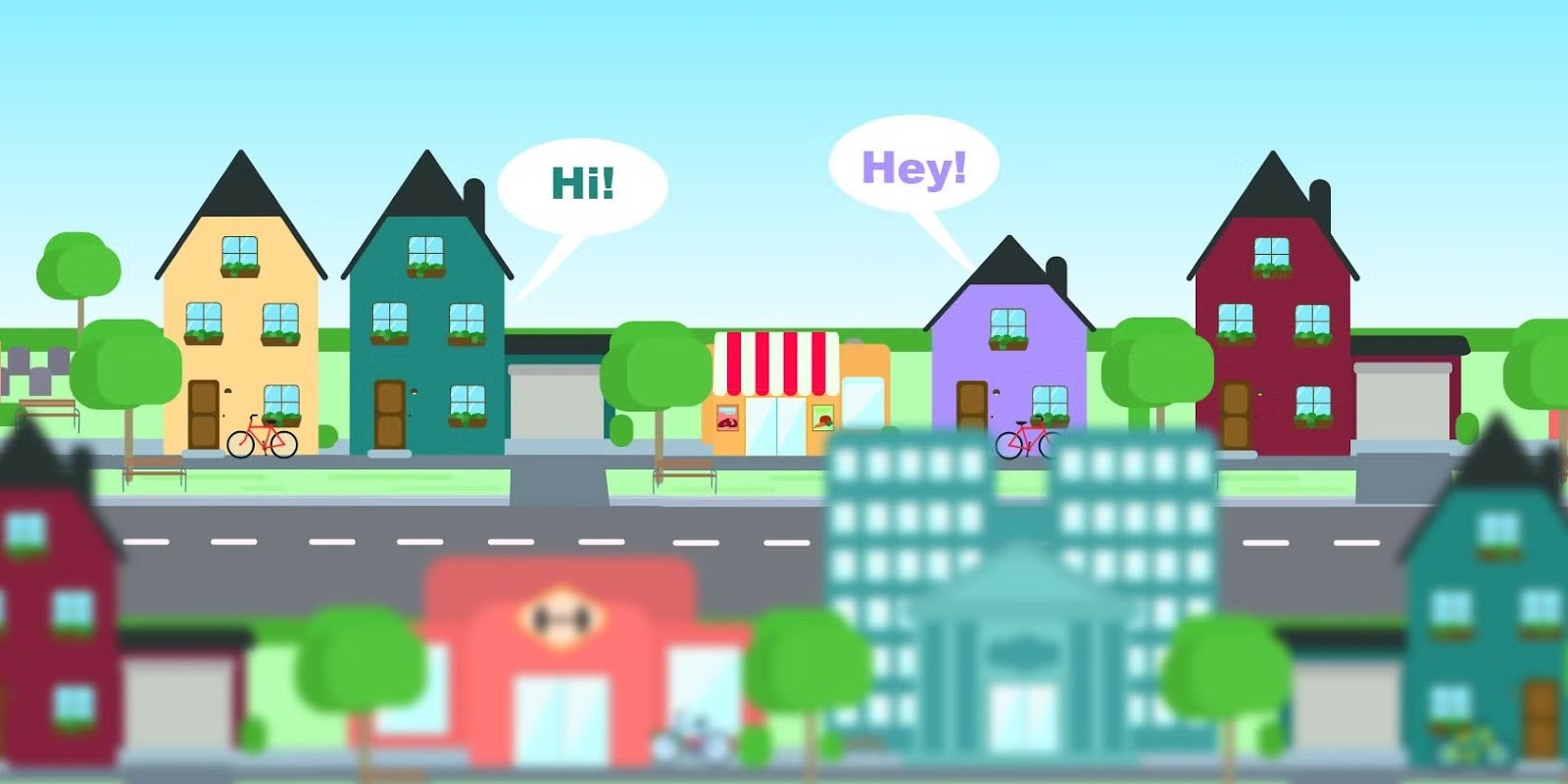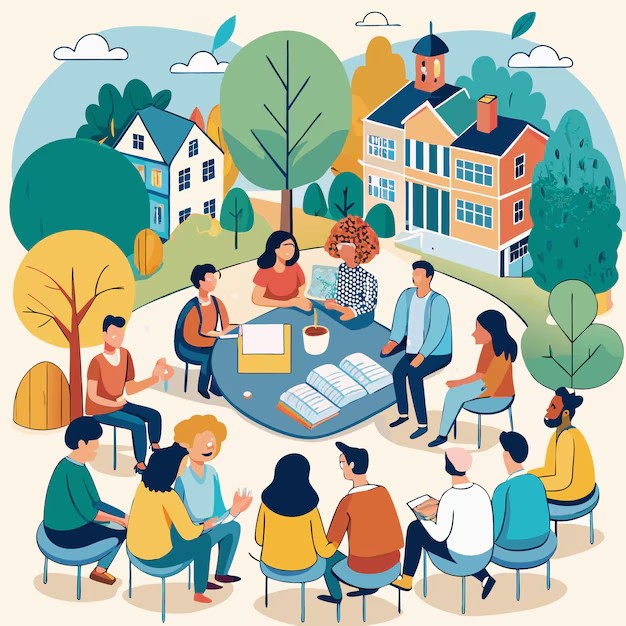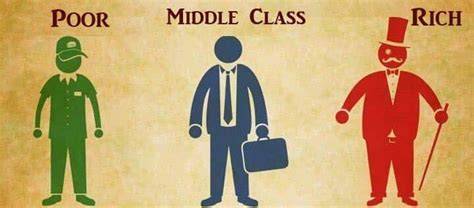Neighborhood Networks: The Social Glue We Often Overlook

In the hustle of daily life, there exists an often-invisible force quietly shaping how we live: neighborhood networks. These informal systems of trust, support, and shared responsibility connect people who live near each other. They are the smiles exchanged across fences, the borrowed tools in a pinch, the shared meals, and the watchful eyes that ensure safety.
Though easily overlooked, neighborhood networks are the social glue binding communities, creating resilience, support, and opportunities that formal systems cannot always provide. Everyday life often demonstrates just how essential these networks are.
When a parent is delayed, neighbors step in to help with childcare. When someone faces illness or a temporary financial setback, informal loans, meals, or practical assistance come from the people around them. These gestures, small as they may seem, cumulatively create a support system more immediate than any formal aid.
These informal connections, built on trust and reciprocity, influence everything from safety and support to small-scale economic opportunities. They are the social fabric that binds communities together, creating resilience and a sense of belonging that no formal institution can fully replicate.
These networks are the informal web of relationships, trust, and reciprocity connecting people who live near each other. They are the smiles exchanged across fences, the shared rides to school, the borrowed sugar in a pinch, and the collective vigilance when danger looms.
The Invisible Support System
Neighborhood networks operate quietly but profoundly. They influence how families navigate daily challenges, manage crises, and seize opportunities. Simple interactions such as sharing information about local events, trading recommendations for services, or coordinating schedules, strengthen the sense of belonging and mutual accountability.
Research shows that strong neighborhood ties improve mental health, reduce stress, and foster resilience. People with connected networks tend to recover faster from setbacks, whether economic, health-related, or social. Informal social bonds serve as a first line of defense, offering support when formal institutions fall short.
Economic and Entrepreneurial Impact
Neighborhood networks are not just about emotional or social support; they also have real economic consequences. Local artisans, traders, and service providers often rely on trust-based connections within their communities to grow their businesses. A seamstress may gain repeat clients from neighbors, a local mechanic receives referrals through word-of-mouth, and tutors thrive on community trust.
These informal economies, rooted in neighborhood networks, reduce transaction costs and risks while providing opportunities for growth and collaboration. Collective projects often emerge naturally: residents pooling resources for infrastructure improvements, community gardens, or cooperative businesses. In this way, neighborhood networks function as micro-economies, powered by reciprocity and trust rather than corporate investment.
Modern Connections
As technology becomes part of everyday life, neighborhood networks are increasingly moving online. Messaging apps, social media groups, and local forums now complement in-person interactions. Residents share updates on security, local events, job opportunities, and community initiatives in real time.
Digital networks allow for rapid dissemination of information, connecting people who might not otherwise meet. While these platforms carry the risk of misinformation, when managed well, they enhance traditional neighborhood networks, amplifying their reach and impact.

Credit: anggerrestu
Neighborhood networks are critical for safety. Informal watches, alert systems, and coordinated vigilance rely entirely on resident participation. They often act as the first line of defense against crime, provide early warnings in emergencies, and foster a sense of collective responsibility.
Strong networks reduce vulnerability, while weak ones can exacerbate risks. When neighbors look out for each other, the likelihood of crime or accidents diminishes. Community cohesion, built on trust and shared norms, becomes an invisible protective shield, demonstrating that safety is not solely dependent on formal enforcement.
Despite their value, neighborhood networks face pressures in modern life. Busy schedules, urban sprawl, and the prevalence of digital interactions can weaken face-to-face connections. As people move frequently, the continuity of relationships is disrupted, and trust must be rebuilt continuously.
Social fragmentation, differences in socio-economic status, or the arrival of new residents can also challenge cohesion. Networks are strongest when sustained by ongoing interaction and shared experiences; without these, they risk weakening over time.
Neighborhood networks are more than conveniences; they are essential mechanisms of social resilience. In times of uncertainty, economic instability, health crises, or environmental challenges, strong community bonds enable quicker recovery and collective problem-solving.

These networks also encourage civic engagement. People involved in local networks are more likely to participate in communal projects, advocate for neighborhood needs, and support vulnerable residents. They reinforce norms of mutual respect and responsibility, creating a cycle of trust and cooperation that strengthens the community.
Urban planners and policymakers often overlook the significance of neighborhood networks. However, recognizing their value can inform practical interventions: community centers, safe public spaces, and local forums for communication can bolster cohesion. Policies encouraging shared public areas, cooperative projects, and community-driven initiatives can nurture networks and enhance their effectiveness.
Governments and organizations that leverage neighborhood networks for initiatives such as public health campaigns, disaster response, or education programs, often achieve higher participation and impact, showing the practical benefits of integrating informal networks into formal planning.
Faces of Neighborhood Networks
Everyday life is full of examples of neighborhood networks at work. Families share tools, groceries, and meals. Residents organize clean-ups, neighborhood markets, or safety patrols. Online groups coordinate volunteers, alert neighbors to emergencies, and spread helpful information.
These networks operate quietly, yet their effects are profound. They reduce isolation, provide practical support, and create opportunities for collaboration. They strengthen communities in ways that are difficult to measure but deeply felt by those involved.
Neighborhood networks are often overlooked in discussions about urban planning, social policy, or economic development. Yet they are among the most powerful forces shaping daily life. From informal support systems and micro-economies to safety initiatives and digital coordination, they quietly influence how families navigate challenges and build resilience.
Recognizing and supporting neighborhood networks is not just a social priority; it is an investment in community well-being, safety, and cohesion. In a world where life grows busier and connections become more fragmented, these networks remind us that proximity, trust, and mutual responsibility remain among humanity’s most enduring assets.
You may also like...
Neighborhood Networks: The Social Glue We Often Overlook

Neighborhood networks quietly connect people, offering support, safety, and opportunities that often go unnoticed. They ...
Why Some People Fear AI and Others Can’t Wait to Use More of It

Some people welcome AI with excitement, while others worry about what it means for work, privacy, and control. This piec...
Neuer's Shocking Gaffes Gift Arsenal Gargantuan Champions League Victory Over Bayern
)
Arsenal delivered a decisive 3-1 blow to Bayern Munich in the UEFA Champions League, propelled by two critical errors fr...
Mbappe's Historic Poker Sinks Gutsy Greek Side in Champions League Masterclass
)
Kylian Mbappe delivered a historic performance, scoring a four-goal haul, including a record-breaking hat-trick, to lead...
Shockwaves! John Wick Star Confirms Beloved Action Franchise is Officially Over

Scott Adkins returns as Navy SEAL Jake Harris in One Last Shot, the final installment of the One Shot franchise, set for...
Fast X: Vin Diesel Finally Addresses Explosive Feud with The Rock

Long-time 'Fast & Furious' co-stars Vin Diesel and Dwayne 'The Rock' Johnson have officially buried the hatchet, with Di...
Shakira's Global Domination Continues: New Mexico Dates Shatter Records for 2026 Tour

Shakira's Las Mujeres Ya No Lloran world tour continues its record-breaking run in Mexico, adding three new dates for Fe...
Tragedy Strikes: Jackson Browne's Son Ethan Browne Dies at 52

Singer-songwriter Jackson Browne is mourning the loss of his son, Ethan Browne, who passed away on November 25, 2025, at...
.png&w=1920&q=75)




